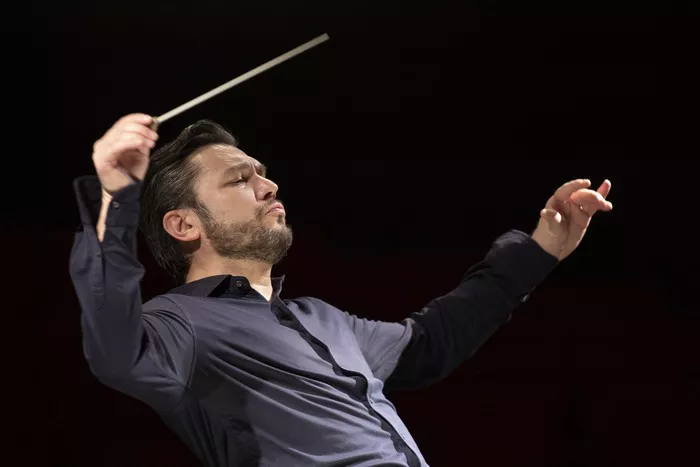Tchaikovsky’s ballets are legendary for their enchanting melodies, intricate choreography, and captivating storytelling. Among these masterpieces, “The Sleeping Beauty” stands out as a timeless classic that continues to mesmerize audiences worldwide. Composed in 1889, with a libretto by Ivan Vsevolozhsky, this ballet is a stunning fusion of music, dance, and theatrical spectacle. As we delve into the depths of this exquisite creation, we uncover the brilliance of Tchaikovsky’s musical genius and the enduring allure of this beloved ballet.
A Tale of Enchantment: The Story Behind the Ballet
At the heart of “The Sleeping Beauty” lies a tale of enchantment, romance, and the triumph of love over adversity. Inspired by the timeless fairy tale of the same name, the ballet follows the story of Princess Aurora, cursed to sleep for a hundred years by the wicked fairy Carabosse. Only the kiss of a handsome prince can awaken her from her slumber, leading to a grand celebration of their love and the defeat of evil forces.
Tchaikovsky’s music breathes life into this enchanting narrative, with each note weaving a tapestry of emotions that mirror the drama unfolding on stage. From the delicate melodies of Aurora’s awakening to the triumphant fanfares of the grand finale, every moment is infused with the composer’s signature blend of lyricism and grandeur.
Musical Mastery: Tchaikovsky’s Symphony of Sound
Central to the enduring appeal of “The Sleeping Beauty” is Tchaikovsky’s masterful score, which showcases his unparalleled ability to evoke emotion through music. From the sparkling waltzes of the Prologue to the majestic variations of the Rose Adagio, each movement is a testament to the composer’s versatility and creativity.
One of the most iconic pieces from the ballet is the “Waltz” from Act I, which transports listeners to the opulent court of King Florestan XIV. With its lilting rhythms and swirling melodies, this enchanting waltz captures the elegance and grace of a royal ball, inviting audiences to join in the celebration.
Equally memorable is the hauntingly beautiful “Panorama” from Act II, which depicts Aurora’s journey through the enchanted forest to her hidden palace. Here, Tchaikovsky’s lush orchestrations and ethereal harmonies create a sense of wonder and mystery, transporting listeners to a magical realm where anything is possible.
Choreographic Brilliance: Bringing the Ballet to Life
In addition to Tchaikovsky’s sublime music, “The Sleeping Beauty” owes much of its enduring popularity to the exquisite choreography of Marius Petipa. As the maestro of the Imperial Russian Ballet, Petipa was renowned for his innovative dance compositions and meticulous attention to detail.
From the dazzling displays of classical technique to the intricate patterns of the ensemble dances, Petipa’s choreography is a testament to the beauty and precision of ballet as an art form. Each pas de deux, variation, and ensemble number is crafted with care, allowing dancers to showcase their technical prowess and artistic expression.
One of the most iconic moments in the ballet is the Rose Adagio from Act I, in which Princess Aurora performs a series of supported balances while being courted by four suitors. This challenging sequence requires both strength and poise, and it serves as a showcase for the ballerina’s skill and artistry.
Equally impressive is the Grand Pas de Deux from Act III, in which Aurora and her prince perform a series of breathtaking lifts, turns, and jumps in celebration of their love. Here, Petipa’s choreography seamlessly integrates with Tchaikovsky’s music, creating a harmonious union of sight and sound that leaves audiences spellbound.
Enduring Legacy: The Timeless Appeal of “The Sleeping Beauty”
More than a century after its premiere, “The Sleeping Beauty” remains a cornerstone of the classical ballet repertoire, enchanting audiences with its timeless story, exquisite music, and breathtaking choreography. Whether experienced on stage or enjoyed through recordings, this beloved masterpiece continues to inspire wonder and awe in all who encounter it.
From its enchanting overture to its triumphant finale, “The Sleeping Beauty” is a testament to the enduring power of art to transport us to magical realms and touch our hearts with its beauty and grace. As we celebrate the legacy of Tchaikovsky’s masterpiece, we are reminded of the timeless truths it embodies: that love conquers all, and that dreams can indeed come true, if only we believe.
Conclusion
In conclusion, “The Sleeping Beauty” stands as a shining example of the transformative power of music and dance, reminding us of the beauty and wonder that exist in the world around us. Through its timeless melodies and enchanting storytelling, this beloved ballet continues to captivate audiences of all ages, inviting us to embark on a journey of imagination and discovery that will endure for generations to come.

